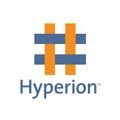Creating Sample Application in Hyperion Planning 9 version
1. Facilitates collaboration, communication, and control across multi-divisional global Enterprises
2. Provides a framework for perpetual planning, with attention to managing volatility and Frequent planning cycles
2. Provides a framework for perpetual planning, with attention to managing volatility and Frequent planning cycles
3. Provides ease of use and deployment through the Web or Oracle's Hyperion® Smart View for Office
4. Lowers the total cost of ownership through a shorter roll out and implementation phase, and easier maintenance for applications
5. Enhances decision-making with reporting, analysis, and planning
6. Promotes modeling with complex business rules and allocations
7. Integrates with other systems to load data
Some of the features of Hyperion Planning are
1. It uses multidimensional data structure which is powered by Essbase calculation Engine for data collection and Analysis.
2. Web based user data entry forms which users themselves can create.
3. Users can set their targets online and can do bottom-up planning.
4. Ability to create complex models using business rules.
5. Currency conversion feature for multi currency applications.
6. Ability to create complex models.
7. Users can create task lists which enables them to understand the status of their tasks.
Before Starting Creating Planning Application you should have
2. Hyperion Shared Services
3. HAL-Hyperion Application Link/DIM-Data Integration Management
4. HBR-Hyperion Business Rules
5. Smart View for Office and Excel Add-in
6. EAS/AAS
7. We also require one Relational Database to Store Planning Frame Work/Components (Meta data is Stored in both RDBMS and ESSBASE)
Planning Application Creation Process
Pre-Requisites are RDBMS database and ESSBASE server +Data Source(UDL/DSN)
Steps for Creating Planning Application in System 9
1. Application Name and Description
2. Defining Calendar
3. Defining Currencies
4. Defining Plan Types






